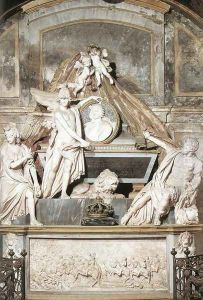Filippo Collino Paintings
Filippo Collino was an Italian sculptor born in 1741 in Cambiano, a town near Turin in the Piedmont region of Italy. He lived during a period that saw the transition from the Rococo to the Neoclassical style in art. Collino's work was influenced by the prevalent artistic trends of his time, and he contributed significantly to the sculpture scene in Italy, particularly within his region.
Not much is known about Collino's early life and training, but it is believed that he studied under prominent sculptors of his time, which was common for artists in that era. His sculptural works often reflected the elegance and grace of the Rococo movement but later in his career, he adopted the more restrained and classical approach of Neoclassicism.
Throughout his lifetime, Collino received numerous commissions for religious and secular works, including statues, busts, and reliefs. His craftsmanship was not limited to monumental sculptures, as he also produced smaller, more intimate pieces that were sought after by collectors of the time.
Among his notable works are the statues at the Superga Basilica in Turin, which showcase his ability to work on a grand scale. Collino's religious sculptures, characterized by their expressive detail and dynamic compositions, can be found in various churches and cathedrals within the Piedmont region.
Despite his achievements, Filippo Collino is not as widely recognized today as some of his contemporaries. Nevertheless, he made a lasting impact on the local art scene of Piedmont and contributed to the cultural heritage of the region. He passed away in 1826, leaving behind a body of work that continues to be studied and admired by those interested in the development of sculpture during the late 18th and early 19th centuries.
